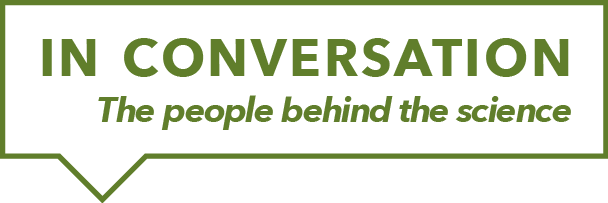
Published on: Aug 12 2020
Meet Mehmet Soforoglu, a confectionery application scientist who bridges the gap between taste and nutrition, in conversation with Anne-Marie O’Sullivan from the Kerry Health and Nutrition Institute.
Anne-Marie: Can you tell us about the work you do?
Working on the applications team is like being a bridge connecting two sides. On the one side, we have a great collection of taste and nutrition solutions and on the other side, we have customers who are manufacturers looking to improve their product. My responsibility is to collaborate with our technology teams, evaluate all possibilities based on industrial feasibility, design an innovative approach and come up with the best solution.
In other words, imagine having many ingredients on your kitchen table and when you are trying to cook a great meal. I am the one who selects the suitable ingredients and finds out possible ways of cooking/preparation and serving to help your meal taste the best it can, in the easiest way possible.
For the above purposes, I generally work on a lab scale to understand how to adapt it an idea to an industrial scale. This includes coming up with product recipes, alternative technologies/ingredients, application steps and the final product (results). We need to consider all of the above details, since each of them would have an impact on final taste and texture.
I find that being a food scientist has an impact on your daily life, as well. When I go shopping, I find myself looking at ingredients listed on products and evaluating the effects of each ingredient or picturing the processing steps that made this product possible.
What sparked your interest in science?
Wearing a white lab coat and working in laboratory was my childhood dream. I could always see myself working in the biology or chemistry fields; on top of that, math was my favourite subject through all of the years of my education. Food science is a way to bring biology, chemistry, and math together to solve problems and create solutions.
Why did you choose your specialty?
Prior to university, I narrowed down promising careers to pharmaceutical science or food engineering based on my discussions with advisors and lecturers. Ultimately, I chose food science.
Can you remember the moment you decided it was the right area for you, or was it more of a gradual draw?
Why food science? I would state two main reasons: ‘I love food’ and ‘food is one of the essentials of life’. During my graduate degree, I had a chance to observe how foods like dairy, beverages and confectioneries were produced. Later on, I entered the research and development world during my master’s degree and, after I entered to confectionery world, it didn’t take long to choose my path in R&D. A quote from Confucius is my inspiration which is ‘Choose a job you love and you will never have to work a day in your life’. I feel excitement every day when I travel to the office, so, I think I made the right choice in my career.

What are particular highlights or scientific discoveries you’ve contributed to?
During my master’s degree program at Hacettepe University Food Engineering department I was able to contribute to development of a way to rapidly detect presence of GMO content in food. I did my thesis study on ‘Nano-particle based DNA biosensor for the detection of genetic modified organisms by surface enhanced Raman spectroscopy’. In this study, our main aim was to develop a biosensor which is sensitive, rapid and accurate to detect GMO content in foods, as GMO has been a big concern in the food industry.
Along my professional career, I have worked on development of many products and R&D projects mainly in the sugar confectionery category, including processing and packaging. Some examples include a ‘gelatin-free jelly’. Gelatin’s presence in foods means vegetarians, vegans, or other consumers who avoid animal-based products cannot consume that product, so a gelatin-free version of a food helps reach those consumers. This product was rewarded ‘product of the year’ in the market.
On another project, I worked for more than a year to develop, upscale to industrial scale, and launch a product which was first of its kind (combining jelly and chocolate) in the market. I have also been working with Kerry technology teams effectively to discover new taste, cleaner/healthier and new texture possibilities for confectionery category.
Looking at the food and beverage landscape and your field of work, what’s stimulating your curiosity right now?
Research is showing that textural experience can be just as important as taste when it comes to enjoying food. This can be important for making products more pleasurable to eat, such as a confectionery food that has a similar taste and texture to one you enjoyed in your childhood, but it can also be helpful at improving how healthy a product is.
Due to current circumstances we are going through globally, healthy diet concerns have been popular now more than ever. But we also should keep in mind that confectionery products are consumed to boost our mood and enjoy our time. I believe that ‘balance’ is the magic word in our lives. Saying that, exploring the right balance between health concerns and enjoyment looks like an interesting challenge to take. Texture modification is a way to balance taste and nutrition because the right texture can help a food have an enjoyable eating experience when sugar or fat is reduced to reduce total calories.
What advice would you give newcomers to your field?
R&D is a speciality, which you need to have specific attitudes to be able to fit into it. Whoever is considering to be a R&D specialist, I would like to stress the importance of asking question ‘why?’ and having an attitude of curiosity in this field. As a R&D scientist, details matter a lot to change bigger picture. Addition to this, imagination and creativity plays an important role since we need to play the possible scenarios in our minds to evaluate the best options available.
Finally, sometimes it’s good to have a small break to see what has been done so far, evaluate results and consider possibilities. An R&D scientist should not give up trying to find the right solution!
What would you recommend on KHNI that is relevant to learn more about your field?
The article “Food and Mood: Exploring the Science Behind Nutrition’s Role in Mental Wellness” connects to the idea above that food’s role in health goes beyond the fuel it provides.
Food is fundamental for life and people’s needs and expectations change year by year. When we think about confectionery goods, it may look like only a treat.
From my point of view, it’s much more than that. Confectionery products may feed our souls by taking us back to memories, boost energy, make us happy, or be consumed as a better-for-you version of a higher calorie food someone may eat (fortified or enriched).


